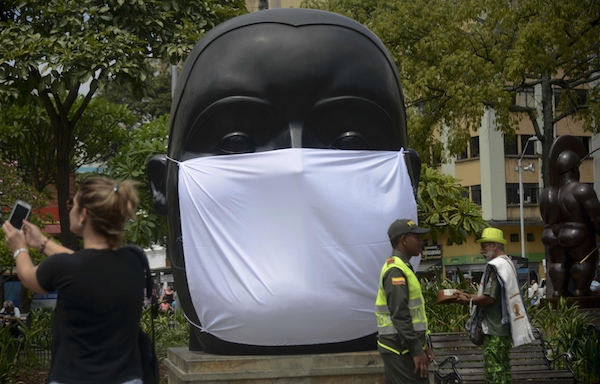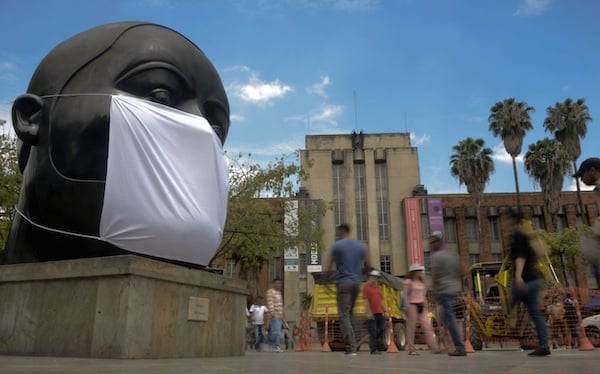Art World
Colombian Environmentalists Interfere with Fernando Botero Sculptures
The activists were protesting against high levels of pollution in Medellin.

Photo: RAUL ARBOLEDA/AFP/Getty Images
The activists were protesting against high levels of pollution in Medellin.

Amah-Rose Abrams

A group of “Cabeza” sculptures by Colombian artist Fernando Botero have been drawn into a large-scale protest against pollution in Medellin.
The 23 bronze sculptures, rendered in the artist’s trademark style and installed in 2002, have since been adorned with oversized surgical masks, which environmental group Green City Collective placed on the works in Plaza Botero. The sculptures sit on over 80,000 square feet of public space near the Museum of Antioquia and Uribe Palace of Culture.
“We came to the place that we love the most, Plaza Botero…but which is also the most polluted part of the city of Medellin according to our sensors,” Green City’s Carlos Cadenas told AFP. “We designed masks for all of the sculptures and we installed them,” he explained.
The protesters were also promoting an October forum in Medellin in which strategies to implement agreements made last year in Paris during the United Nations Climate Change Conference will be discussed.

Protestors are trying to draw attention to the high levels of pollution in the city.
Photo: RAUL ARBOLEDA/AFP/Getty Images.
The activists also handed out real masks to passersby who reportedly were more than happy to use them.
Carmen Zapata, head of the Air Quality Laboratory at Medellin’s Universidad Nacional, told AFP that there were extremely high levels of pollution in the city as result of the little rainfall caused by El Niño and a change in wind patterns.
“The rainy season and public awareness are fundamental to lower the pollution indices,” Zapata said.
Even after a two-day car ban in April, the quality of the air is so bad that it is harmful to young people and the elderly, and those protesting are asking for solution other than simply waiting for the weather to change.